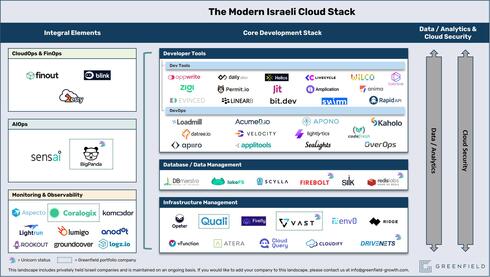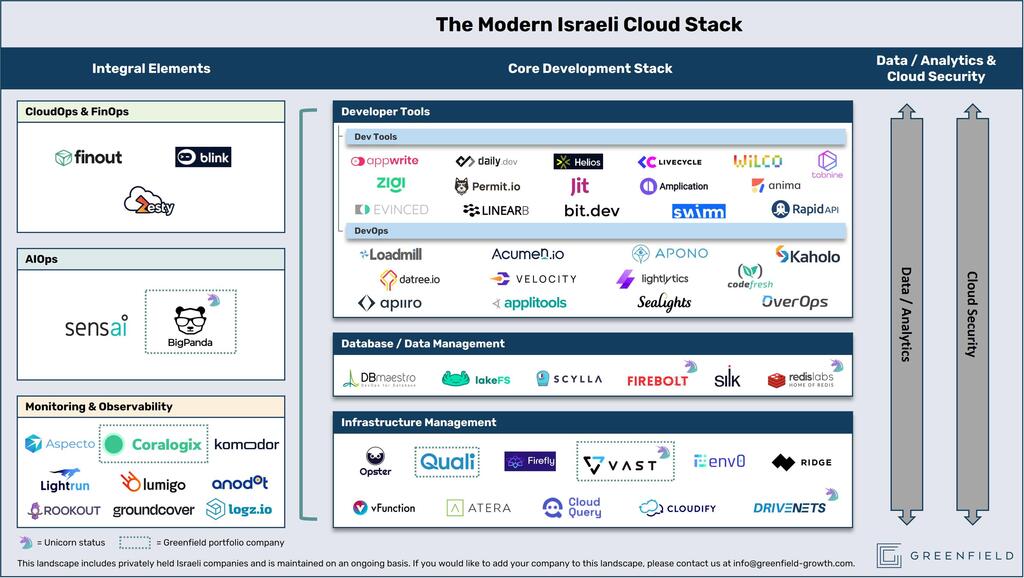
Mapping the Israeli cloud landscape
Israeli cloud technology shows no signs of cooling off as investor appetite remains strong and promising startups are continuously emerging from stealth
In what may be viewed as an inflection point in modern technological history, cloud computing stands as one of the most impactful innovations of our time. With billions of dollars already invested in this space, Israeli cloud technology shows no signs of cooling off as investor appetite remains strong and promising startups are continuously emerging from stealth.
Today, with the on-demand delivery of shared computing resources via the internet, or “the cloud”, organizations can store and access their data on remote servers that are fully managed by third-party cloud service providers. Compute, networking, storage, servers, and other IT resources can easily be provisioned as needed and terminated when no longer in use. Organizations can enjoy the many benefits of leveraging cloud computing such as scalability, elasticity, and cost effectiveness. Cloud computing has completely redefined the IT industry and has not only become the norm, but a necessity for modern development teams.
Cloud adoption shows no signs of slowing down
As cloud and cloud-native technologies are shifting from nice-to have to must-have, the global cloud market continues to grow without any signs of slowing down. Gartner predicts that global cloud revenue will reach $544 billion by 2022 and top $900 billion by 2025.
Aside from the many obvious benefits of cloud computing, the sheer growth in adoption can also be attributed to the ongoing “Cloud Wars”, or the heated contest over the massive cloud market share. Largely controlled by AWS, Azure, and GCP (in that order), cloud service providers are pouring tens of billions of dollars annually into R&D as they race to stay competitive by constantly improving and developing new features. This, coupled with the evidently perpetual increase in end user demands, has created a unique environment where the possibilities are seemingly endless. Despite the overwhelming benefits, these continuous innovations also create additional complexity, which has spawned a wave of companies working to help end users harness the powerful yet enigmatic world of cloud computing.
Enter the modern cloud stack
Behind every application is a stack of technologies supporting the development, production, and ongoing maintenance. Modern cloud technologies such as containers, Kubernetes, serverless, and others have enriched application development while adding new complexities at the same time.
The modern cloud stack depicted here attempts to both identify and lay out these new technologies in an easy-to-understand structure. From the bottom up, the core development stack includes layers such as infrastructure management, databases and data management, and developer tools which are key to building and running applications. On the periphery, tools that run across all layers that augment the operation of the core stack include CloudOps, AIOps, Monitoring & Observability, Data Analytics, and Security.
The Israeli cloud-related landscape
Israel’s innovative reputation is well known across many of today’s hottest sectors, and cloud technology is no exception. Here is additional context on each area of the modern cloud stack along with a cloud landscape highlighting the Israeli startups operating in each area.
(Note that “Data/Analytics” (AI/ML/BigData/Data Analytics) and “Cloud Security” are also integral elements of cloud native development but were left out of this landscape since they are significant areas that deserve their own individual landscaping.)
Infrastructure Management – Infrastructure management is proving to be an increasingly difficult task. Key elements of the core infrastructure needs are being distributed across multiple service providers and data centers, while technologies such as microservices and serverless are only adding to the complexity. Tools that can help automate the management and provisioning of infrastructure from a single pane of glass are now more important than ever.
Databases and Data Management – Data for applications is like gasoline for cars. It’s needed to get things up and running and there needs to be a constant flow to the right places at the right times. As our daily lives continue to become increasingly infused with the digital world, the amount of generated data is growing exponentially. Databases that can make sense and order of the overwhelming surge of data, and even provide a layer of analytics, are now mission critical. Concurrently, tools that ensure the correct flow of data between data sources, databases, and applications are no less crucial.
DevOps and Dev Tools – At its core, DevOps is a set of practices which aims to accelerate software delivery timelines by optimizing the method by which organizations develop and release code. Companies in this subsegment are providing solutions that directly help organizations successfully embrace DevOps practices. Dev Tools assist developers with their daily activities, such as automation of common tasks, no/low code tooling, and project management software.
Monitoring and Observability – As modern infrastructure becomes more complex and distributed, gaining visibility and control over your environments and systems is an increasingly daunting task. Monitoring tools track the overall health and performance of a system and can alert you when issues arise. On the other hand, observability tools aim to provide deeper insight into the why, such as why was there a service disruption or where are the performance bottlenecks. Observability relies on three main elements – logs, metrics, and traces. Using this data, observability tools enable IT teams to view their complex systems through a single pane of glass and be better positioned to optimize performance and remediate issues.
AIOps – Modern cloud technologies are great for increasing the rate of innovation but also create a flood of new data, making it extremely complex for IT and operations teams to manage incident response. This can cause performance issues and outages leading to poor customer experiences, lost revenue, customer churn, and other negative business consequences. AIOps aggregates data from all data sources and environments, normalizes the data, and uses AI and machine learning to streamline IT operations by automating event correlation, root cause analysis, and incident response.
CloudOps and FinOps – With increasingly complex infrastructure needs, immense volumes of generated data, and multitudes of tools being used throughout organizations, a segment termed CloudOps has emerged, which aims to provide a holistic view of the entire cloud stack and better manage and optimize performance. FinOps is solely focused on managing cloud costs, enabling organizations to get the most business value out of their cloud operations.
As more and more organizations across virtually all industries are shifting to the cloud, we can assume that the world of cloud technology is only in its infancy and the pace of innovation will increase dramatically.
Organizations continue to embrace new technologies that enable them to fully leverage the cloud in a simple yet sophisticated manner. As Israeli technology has already contributed considerably to this space, and with some of the brightest minds in the industry, we expect Israeli entrepreneurs to feature significantly among the next order derivatives of this landmark innovation, as the modern cloud stack becomes home to ever larger and more critical companies.
Raz Mangel is a principal and Meir Cohen is an investor at Greenfield Partners















